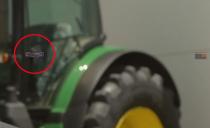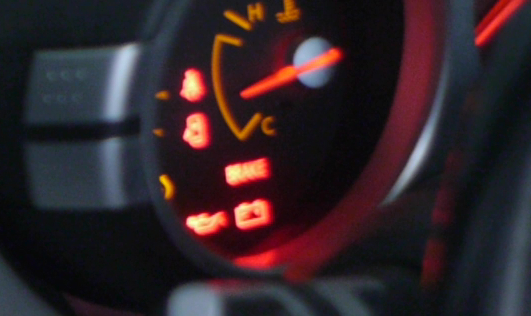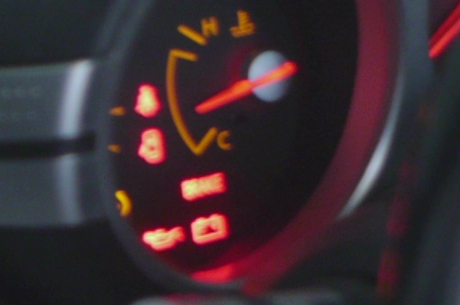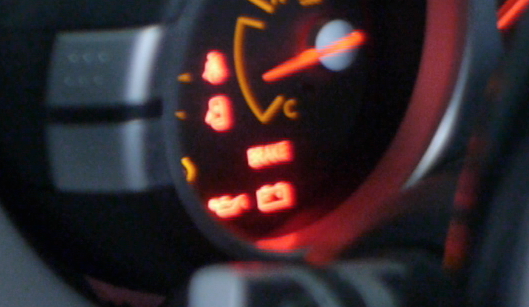
-
Not sure why there is an argument on whether 5DtoRGB is different than the FCP transcode when handling GH2 shots... I created this side-by-side vid just to show how different it appears to eye. To me 5DtoRGB is now a must for anything in post... just sucks I found this out after finishing most of a feature length documentary.
-
@jbpribanic Real nice comparison!
-
@jbpribanic Really not seeing it. Yeah, 5dtorgb makes it a little bit flatter, but overall i thought the FCP shots looked better
-
@christianhubard ... I agree about FCP looking better. The problem is it looks more like a finished canvas as opposed to one that can be altered to your tastes in post. Did you read my write-up in the vimeo description...? I talk more about the shadow detail and point to comparisons in the clips. @peternap thanks!
-
I bought this little piece of software and I found it a totally waste of money. It does nothing that you can not do in post and often it hangs if you try to convert a list of clips with its batch function. IMHO you better save your money for some other thing.
-
@Nino_llacqua what kind of system are you running? I was going to buy the batch edit, but I've seen others make this complaint.
-
am I the only one with these issues? I don't see this on mts, after redoing converting QT movs are sometimes okay, sometimes these blocks are in other frames on different spots.

 5DtoRGB_screen.jpg726 x 442 - 34K
5DtoRGB_screen.jpg726 x 442 - 34K -
I bought this little piece of software and I found it a totally waste of money. It does nothing that you can not do in post and often it hangs if you try to convert a list of clips with its batch function. IMHO you better save your money for some other thing.
Completely wrong... please do more research before attacking products and workflows that you may not have the most experience with. It's not good for the community to just make blatantly-false claims like that.
Here, I'll post this again for those who have missed it...
Native footage:

5DtoRGB (Prores422HQ):

Premier:

If you do not see the difference that 5DtoRGB makes... you should not be color grading or doing your own post work. It's pretty obvious... and the best looking 4:2:2 footage I've seen besides actually shooting to a 4:2:2 prores codec in camera.
But then again, if you don't not see it, or do not care... then don't use it! Just don't go around saying that it's crap and a waste of money.
-
@bwhitz completely agree. The difference seems obvious, but needs explained. Not sure how discarding this software helps anything, especially if it's boosting abilities for the GH2. I bought the batch app so we'll see how it goes.
-
@bwhitz Nice example. Is the bottom one converted by Adobe media encoder? Adobe software has a bug with MTS, and all h264 footage. Interlaced chroma bug, or something like that. It is pretty obvious on your example - red lines look interlaced. Besides that, blacks are crushed, image is less flat and has much more contrast, same as when transcoded in FCP.
-
Nope, just straight into CS5 and an export. People were claiming that since Adobe can work natively with files... there would be no degradation. And while it sure can work with the native MTS files, there is definitely a quality hit... and it sure doesn't "improve" footage like 5DtoRGB.
Didn't know about the bug... interesting. Did they fix it in CS6? Either way, when playing back the footage, it was still MUCH noisier and muddier than either the FCP import utility or the 5DtoRGB conversion, in addition to the obvious chroma botching.
-
Ah, it's confusing since a lot of people buy it for the dynamic range but in reality it seems the Broadcast rangers like it for pixel peeping/noise reduction etc. It's always hard to judge as I've tested the footage MANY TIMES and sometimes Log n' transfer looks better in banding, other times not so much depending on subject / contrast ratio / detail etc, but 5dtorgb is DEFINITELY better all around for reducing chroma noise overall, and ALSO sometimes log n' transfer has this diagonal banding flash for a frame and I was convinced it was the camera or the hack, but just saw 5dtoRGB ELIMINATES diagonal flash banding/blotching.
Full Range just looks closer to what I grade to and I do a lot of grading as well with colorista etc. Is the dynamic range feature really meant for Canon users? I think this is what gets people flaming about the program, they buy it for dynamic range on a GH2 and get told forget about it, just enjoy less artifacts instead.
-
@bwhitz I'm curious about your interpretation of the three frame grabs you posted above. The 5DtoRGB version shows noticeable loss of detail and contrast, which I'd expect to be the intended result from a chroma-smoothing filter of its type. If that's the kind of look you're after, I wouldn't criticize it, but to my eyes it looks more like a subjective preference rather than an objective improvement in image quality.
-
The 5DtoRGB version shows noticeable loss of detail and contrast, which I'd expect to be the intended result from a chroma-smoothing filter of its type.
I don't see where any detail loss is apparent, besides the artificial-detail the micro-block sampling might be psychologically creating.
Loss of contrast is due to using the "full-range" settings... which flatten the image out. People have been discussing this lately, but I prefer it before grading. I always use full-range. If not, I find that there is more noise and muddier shadow. Better to go flat for the trans-code... then crush down if preferred.
Oh, BTW, these grabs are from trans-codes with "chroma-smoothing" turned off. As far as I can tell, 5DtoRGB is actually re-creating the missing data from 4:2:0 to 4:2:2. It'll never be 100% of the quality as if the footage was actually shot at 4:2:2... but it's pretty damn close.
for those car frames did you use broadcast range? the curves look flatter like Full range was used and I see no curve difference using Broadcast (and I'm JUST talking about the latitude btw).
yes, I always use full-range. Just my preference. I feel the results are better this way... even if I plan on adding contrast back.
Edit: Ok, just looked at their site again... apparently there is chroma-smoothing going on no matter what... but unless we get out the dumb-ole test charts... the detail loss, or lack of, will remain subjective either way. I've certainly never seen it. Even on wide-high-detailed shots.
-
@bwhitz what I observe is that, while @Nino_Ilacqua writes "IMHO", you instead accuse him of making "blatantly-false claims" and go on insulting him on a personal level while making what seems to be objective claims. Now, in my book, yours seem to be the one making a disservice to the community. So please cool down.
To stay on topic. I was impressed by your tests the first time you posted them (btw, thanks so much for taking the time to do that), and I decided to take a look and see if 5DtoRGB could have a place in my FCP7 workflow. After some testing, I realized that it didn't, as I could obtain much better result by color correcting the FCP 7 Log and Transfer imports (thanks in part to the added benefit that I could decide on my own the amount of chroma smoothing and chroma sharpening to apply to each individual shot, instead of having a standard one baked in by 5DtoRGB) but YMMV, especially if you are using an editing app other than FCP7.
Now, IMHO, comparing 5DtoRGB's imports to FCPP7 Log and Transfer's imports is like comparing apple and oranges. That is not as far fetched as comparing apples and mozzarellas, but still. A meaningful comparison, IMHO, would be one between graded footage that was initially imported in the two different ways.
For now, my opinion is still that 5DtoRGB is doing automatically things that are better left to a skilled colourist, unless the import feature in an editing app is sub par. And while I think that FCP7 Log and Transfer is far from perfect, I don't think it's sub par. But YMMV.
-
what I observe is that, while @Nino_Ilacqua writes "IMHO", you instead accuse him of making "blatantly-false claims" and go on insulting him on a personal level while making what seems to be objective claims. Now, in my book, yours seem to be the one making a disservice to the community. So please cool down.
Sorry, I just don't feel this way. I called it a "blatantly false-claim" because he had no images or results to prove his point. New readers come across this information late in the thread, and since it is the easier to digest than reading through everyone else findings, accept it as a valid summary.
So to say that I insulted him on a personal level, while he insulted pretty much everyone in this thread (those who actually did tests and have results to share), is well... also a bit insulting. If you just jump in a thread and basically say "I bought this little piece of software and I found it a totally waste of money.", you're gonna get some flack. Because that's a pretty insulting statement on the level of trolling. If he had some examples and results or something... it would have been MUCH different.
-
Side by side video comparisons, ungraded, and graded.
http://www.personal-view.com/talks/discussion/comment/55869#Comment_55869
-
Yeap 709 for sure. We know that GH2 records footages in broadcast range. I guess the confusion is how we had interpreted the Luminance Range option from 5DtoRGB. Initially I thought it meant output luminance range, but the option is for specifying input luminance range. Yes I prefer 709 and Broadcast Range, too.
-
I'll try to be more clear. The first filter I use when grading a 4:2:0 originating shot in 4:2:2 or 4:4:4 is a chroma smoother/sharpener that allows fine tuning of both parameters. Then I stack all the rest of the CC stuff on top of that. During grading, sometimes I have to go back to this first filter as the other filters down in the pipeline have brought up in the particular shot artifacts that can be reduced by further fine tuning either the chroma smoothing or the chroma sharpening, or both. Other times I've to go back and disable that filter altogether as it was just degrading the image without any added benefit. Other times, instead, I've to go back and apply it only to a part of the frame, or apply it differently to different parts of the frame. And yes, that is a royal pain in the ass.
It is in this context that my tests were done. And it is in this context that I suggest everyone does his own tests, according to his own particular workflow, tools, footage and desired results.
-
@rapsoe What chroma smoother do you use? A horizontal blur on the chroma channels?
-
There is a great pack of filters by Graeme Nattress (one of the masterminds behind the RED, a genius and a real nice guy) for Apples Color. If you still work in FCP7 (why not?) they are worth their money and offer chroma smoothing to be fine-tuned. If you know your way around the FX room in Color, you can work magic with them.
Plus, always make sure that your NLE sees HBR footage as progressive and correct that if not. It might be the problem behind that ugly looking stuff from Adobe.
-
Yeah, I've always been curious about the Nattress Chroma Smoother, but I'm using CS6 on a PC unfortunately.
-
@sam_stickland I use the Nattress filters, worth every penny. Actually, much more than that. @nomad, I share your opinion about Graeme. Too bad he is all RED and family now, FCPX would be a much better app if he was developing plugins for it.
-
after long research it seems it found out what probably caused these corrupt files: extendet apple hardware test displayed corrupt RAM :-( Thanks to a guy from finalcutforum who gave me this hint.
Howdy, Stranger!
It looks like you're new here. If you want to get involved, click one of these buttons!
Categories
- Topics List23,970
- Blog5,724
- General and News1,346
- Hacks and Patches1,153
- ↳ Top Settings33
- ↳ Beginners255
- ↳ Archives402
- ↳ Hacks News and Development56
- Cameras2,360
- ↳ Panasonic990
- ↳ Canon118
- ↳ Sony155
- ↳ Nikon96
- ↳ Pentax and Samsung70
- ↳ Olympus and Fujifilm100
- ↳ Compacts and Camcorders300
- ↳ Smartphones for video97
- ↳ Pro Video Cameras191
- ↳ BlackMagic and other raw cameras117
- Skill1,961
- ↳ Business and distribution66
- ↳ Preparation, scripts and legal38
- ↳ Art149
- ↳ Import, Convert, Exporting291
- ↳ Editors191
- ↳ Effects and stunts115
- ↳ Color grading197
- ↳ Sound and Music280
- ↳ Lighting96
- ↳ Software and storage tips267
- Gear5,414
- ↳ Filters, Adapters, Matte boxes344
- ↳ Lenses1,579
- ↳ Follow focus and gears93
- ↳ Sound498
- ↳ Lighting gear314
- ↳ Camera movement230
- ↳ Gimbals and copters302
- ↳ Rigs and related stuff272
- ↳ Power solutions83
- ↳ Monitors and viewfinders339
- ↳ Tripods and fluid heads139
- ↳ Storage286
- ↳ Computers and studio gear560
- ↳ VR and 3D248
- Showcase1,859
- Marketplace2,834
- Offtopic1,319













